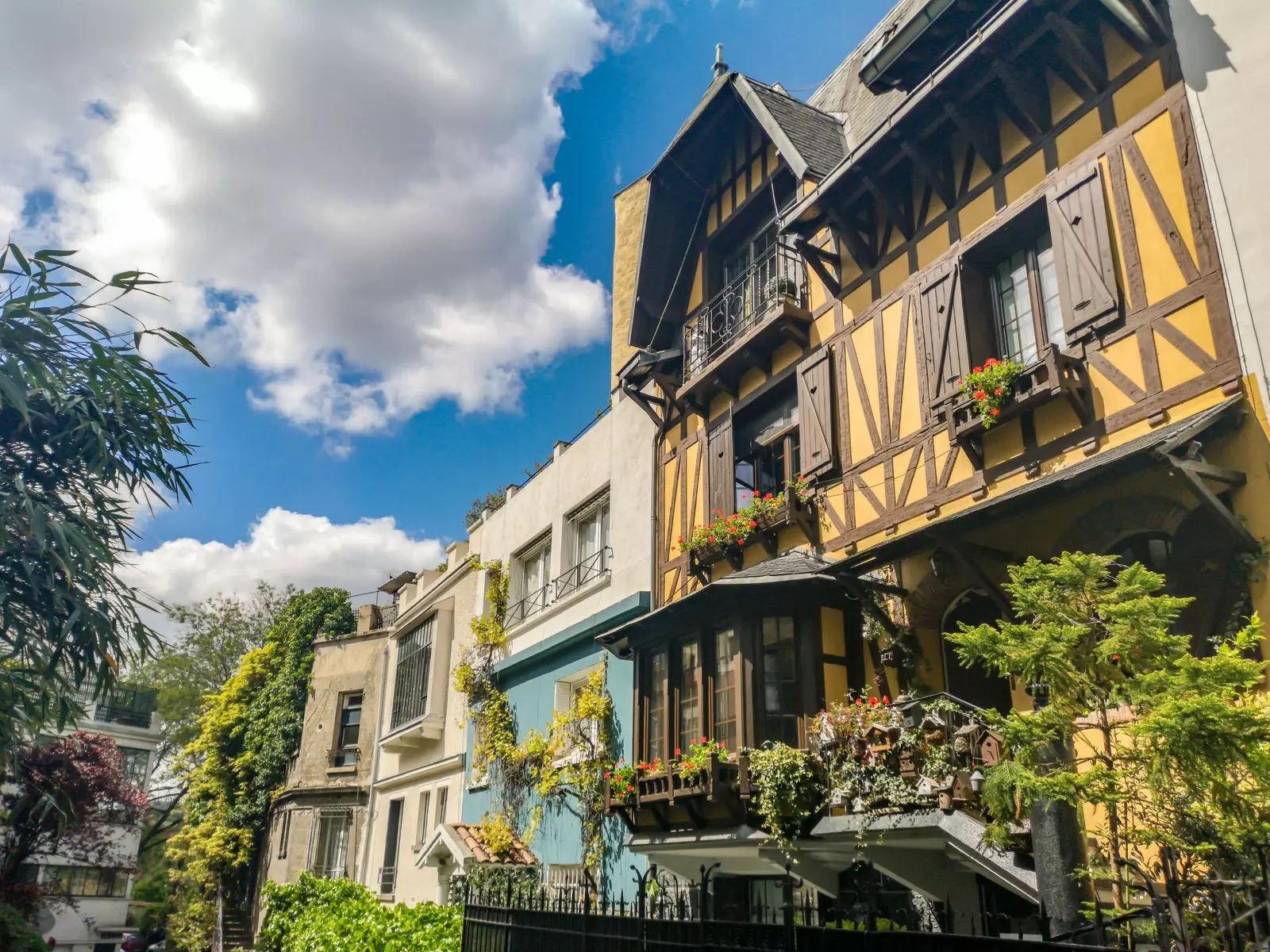
One of the picturesque streets of le quartier de Montsouris, Paris.
SQUARE DE MONTSOURIS, 75014
In the south of Paris, specifically in the discreet quarter of the Montsouris park of the 14th arrondissement, This fascinating green lung is located, a secluded and leafy pedestrian street a stone's throw from the eponymous park, opened to the public in 1959.
This urban treasure with a bucolic atmosphere is characterized by its incredible charm of beautiful residences with an eclectic air, built in the early 1920s. art nouveau, art deco, regional style and other dwellings in pierre de taille or wood, cohabit proudly as an architectural exhibition.
To begin the visit of this picturesque and silent private road of 60 numbers, rendez-vous at 12 rue de Nansouty to enter the square de Montsouris. Its approximately 200 meters covered with irregular cobblestones, are sheltered by rosebushes, petrea volubilis and cherry trees from Japan . And the spring and summer months are covered with flowers, climbing ivy, virgin vines or purple wisteria that invite a pleasant Sunday walk.
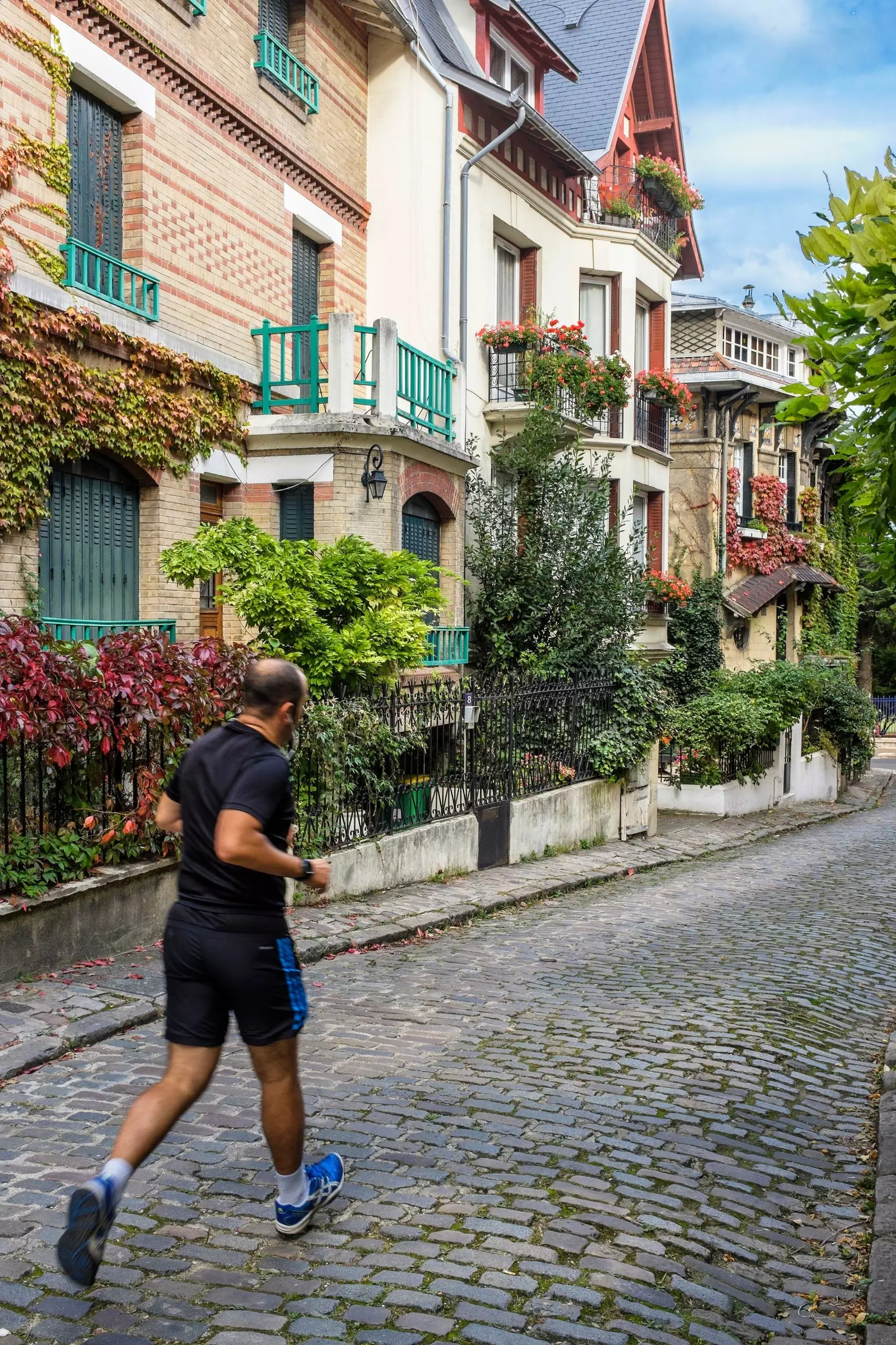
Montsouris Square is one of the most secret Parisian corners.
This vegetable hiding place, formerly called the Zone and frequented by rag pickers, became source of inspiration for artists renowned, who installed their ateliers, such as Georges Braque, Roger Bissière, Nicolas Wacker, Soutine, Jean Chapin or Tsugouharu Foujita.
Among its noted buildings, at number 2 is the Maison Gaut, which – initially entrusted to the renowned Le Corbusier – was conceived in 1923 by the famous Perret brothers. Built in reinforced concrete, it is an example of the architectural principles of the Modern Movement. This structure can be seen especially during the winter months, when the scarce vegetation leaves it bare.
The architect Gilles Buisson erects a curious house at number 6, which combines timber framed and large windows; number 27 boasts its flower mosaics in shades of blue and gold, and on the façade of number 28 a sundial painted in 1900 stands out.
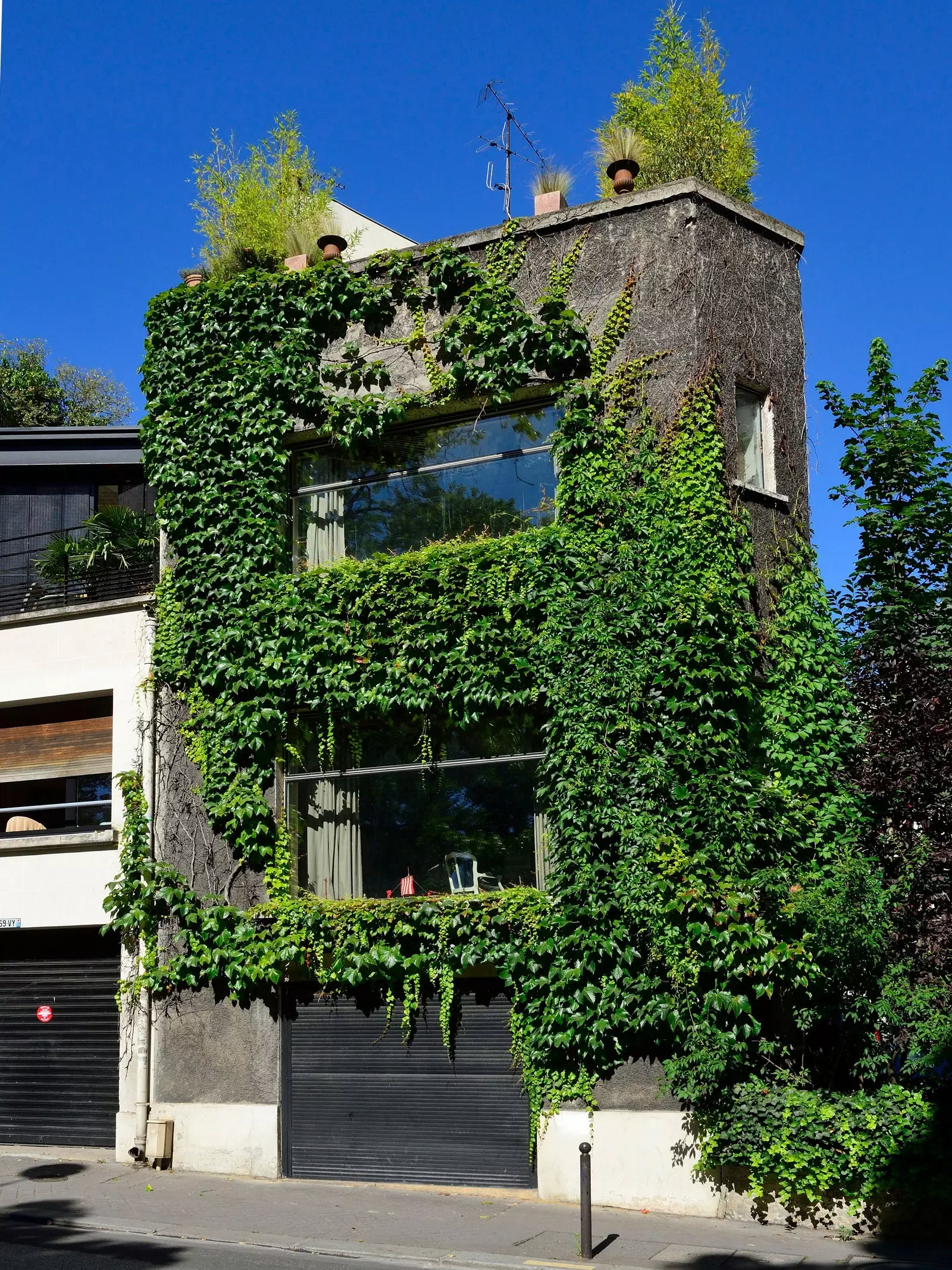
The Parc Montsouris is surrounded by houses built in the interwar period.
In 1940 lies another maison, also built by Gilles Buisson, which since then has only undergone a few important changes. Predominates the mix of his norman colombage with its elements of contemporary style, The lower part is made of stone with large windows and a large part of the interior is made of wood.
Three owners have lived in it, the architect himself, Madame Marceron and, later, his daughter Madame Bouscau, wife of the sculptor Claude Bouscau, that inhabited her until the end of her life. He left her mark with one of his sculptures located in her front yard.
On avenue de Reille, La Maison Ozenfant or Villa Reille is the last maison-atelier in the passage. It was commissioned in 1922 by the cubist painter Amédée Ozenfant to his friend Le Corbusier, who built it together with his cousin Pierre Jeanneret.
Its sober and proportionate white facade with huge horizontal windows, its external spiral staircase and its glass roof in the shape of saw teeth, which was later renovated, predominated. This modernist work is one of the first purist creations of the distinguished architect, on the same level as the villa La Roche and the Maison Jeanneret.
Finally, on this pleasant ruelle, its HBM-type houses (habitations à bon marché) are surprising, 28 popular pavilions made in the interwar period by the architect Jacques Bonnier, modestly covered in ocher or red brick.
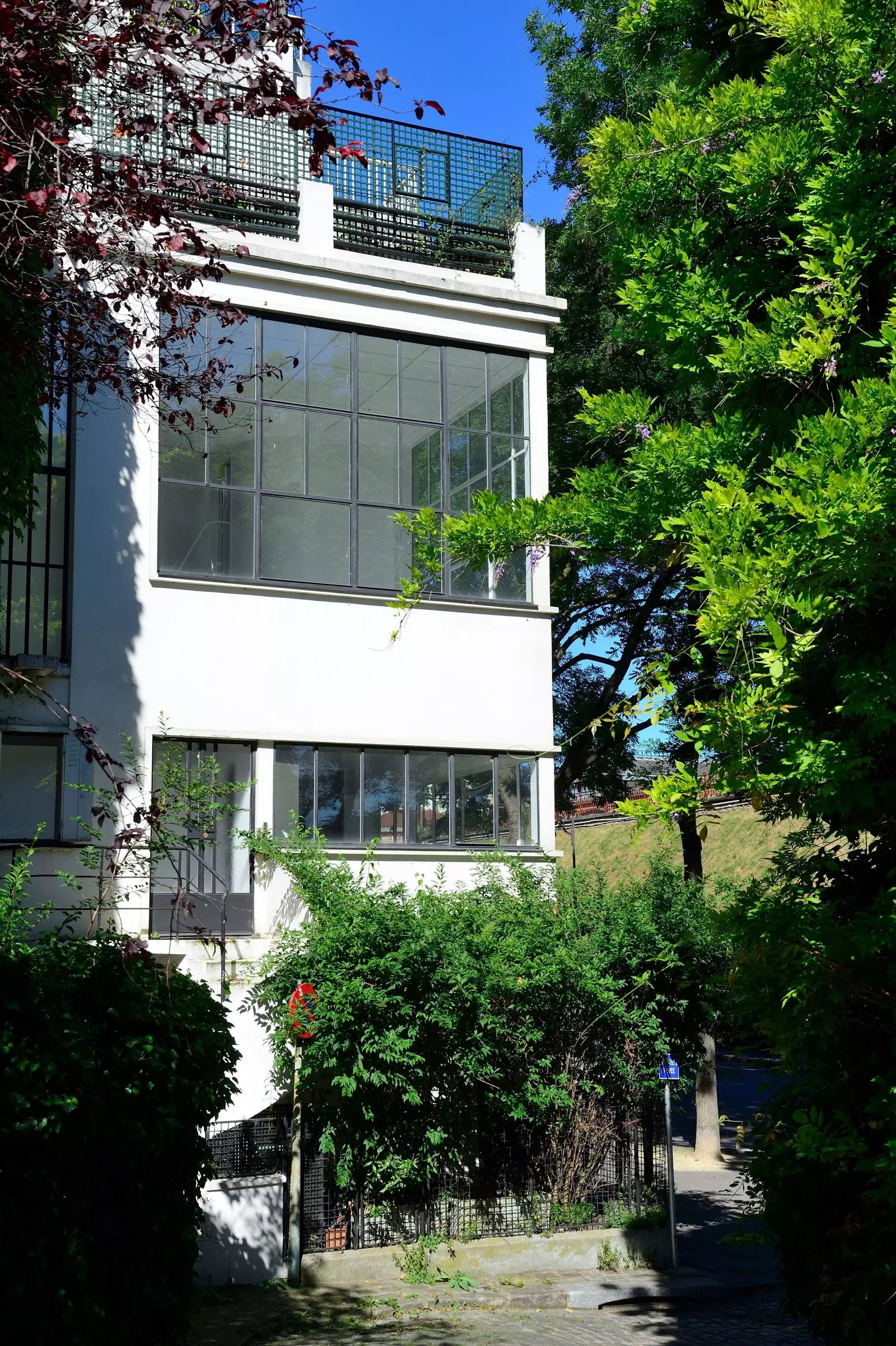
La Maison Ozenfant, commissioned in 1922 by the cubist painter Amédée Ozenfant from Le Corbusier.
**LA CITE FLORAL, 75013 **
On the other side of the Parc de Montsouris, leaving behind the 14th district to enter the 13th, you come to the Cité Florale, a kind of idyllic little town that receives this appeal by the flowery name of its cobbled streets. Thus the rue des Orchidées, the rue des Glycines, the rue des Iris or the rue des Liserons... meet around the square des Mimosas.
East private mini-neighborhood, quiet and picturesque, hidden among modern constructions, it's an unusual bend a stone's throw from the 'Bobo' Butte-aux-Cailles. It was erected between 1925 and 1930, in a triangular marshy area, a former meadow frequently flooded by the nearby Bièvre river. For this reason, to avoid being overweight on this land that is difficult to develop, humble individual houses with a varied appearance were built.
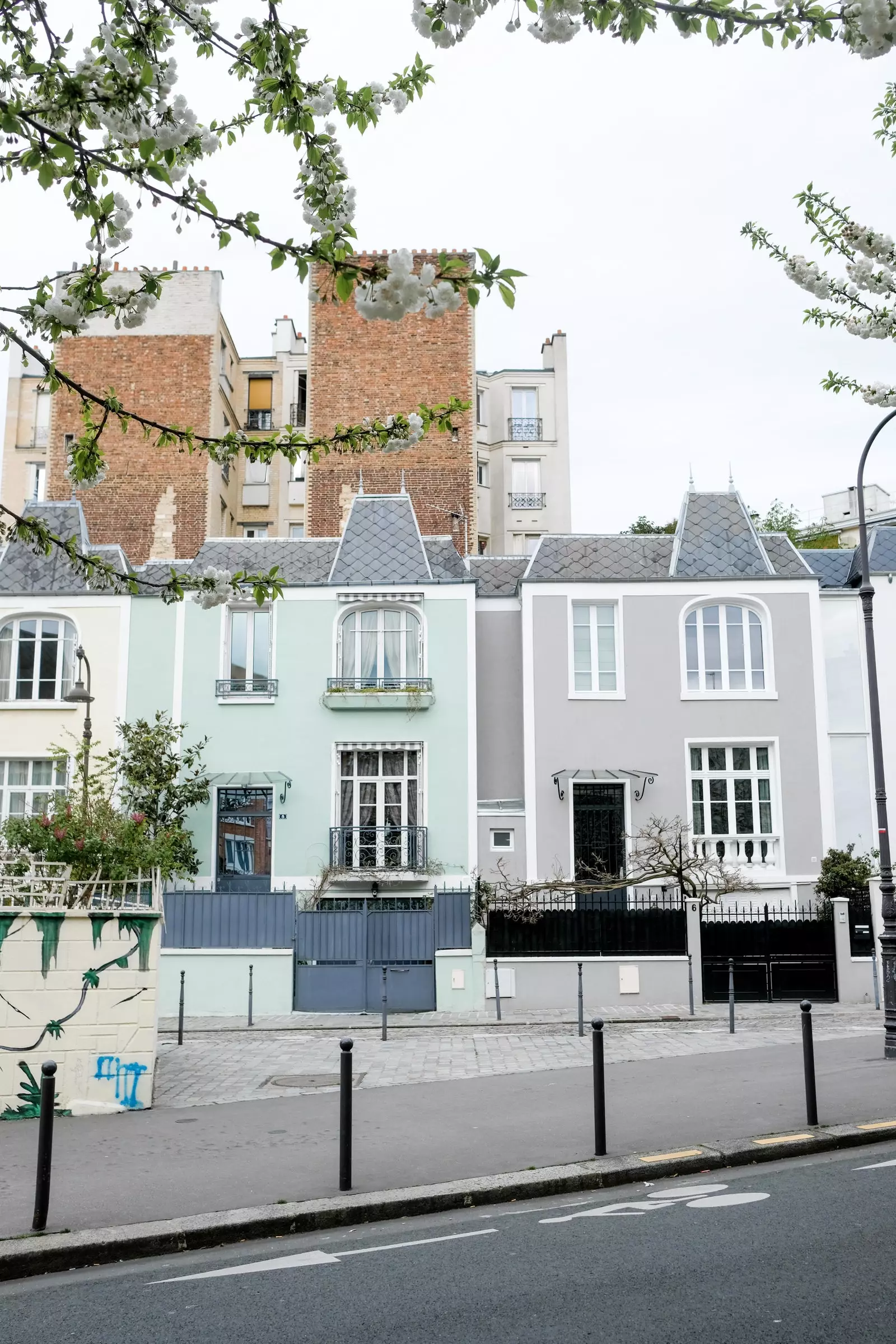
Pastel colored houses at the Cité Florale in Paris.
Today, painted in pastel tones, they flaunt their overflowing gardens with flowers and trees, They are protected by wrought iron gates and invaded by the thicket, constituting a bubble of disconnection that stops time and evades the Parisian hustle and bustle.
Start the poetic walk in front of 45-47 rue Brillat-Savarin, turn off your mobile and let yourself go to rue des Volubilis. As in a perfect picture of a Paris champêtre, there is no lack of beautiful parked bicycles, the neat pots on the balconies and the lucky cats prowling among the plants or sheltered from the rain under the canopies. In the background sounds the song of the birds and, if you are not careful, the resounding of the mellow voice of Françoise Hardy.
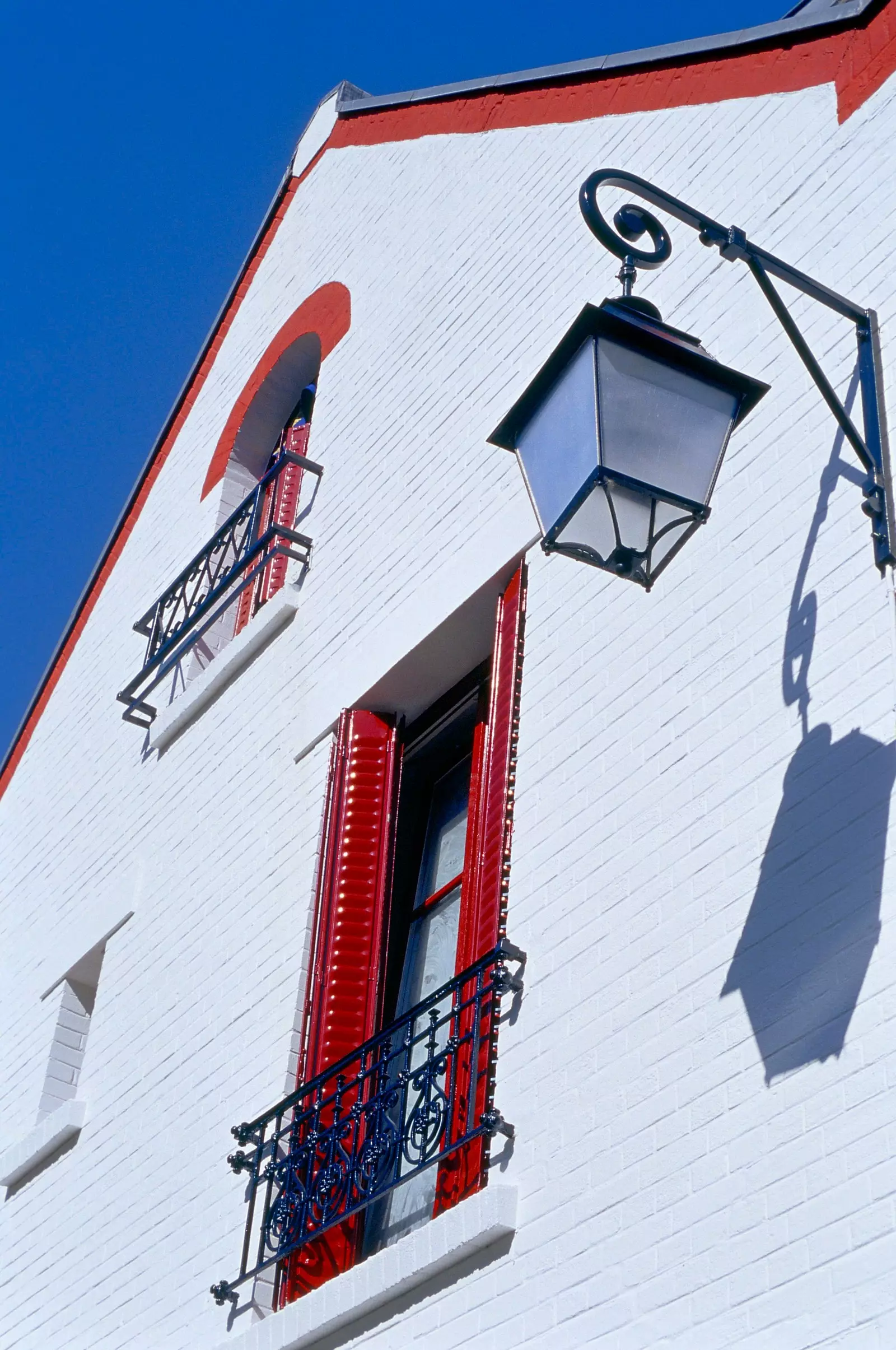
Cité Florale is like an idyllic little village next to Montsouris Park.
